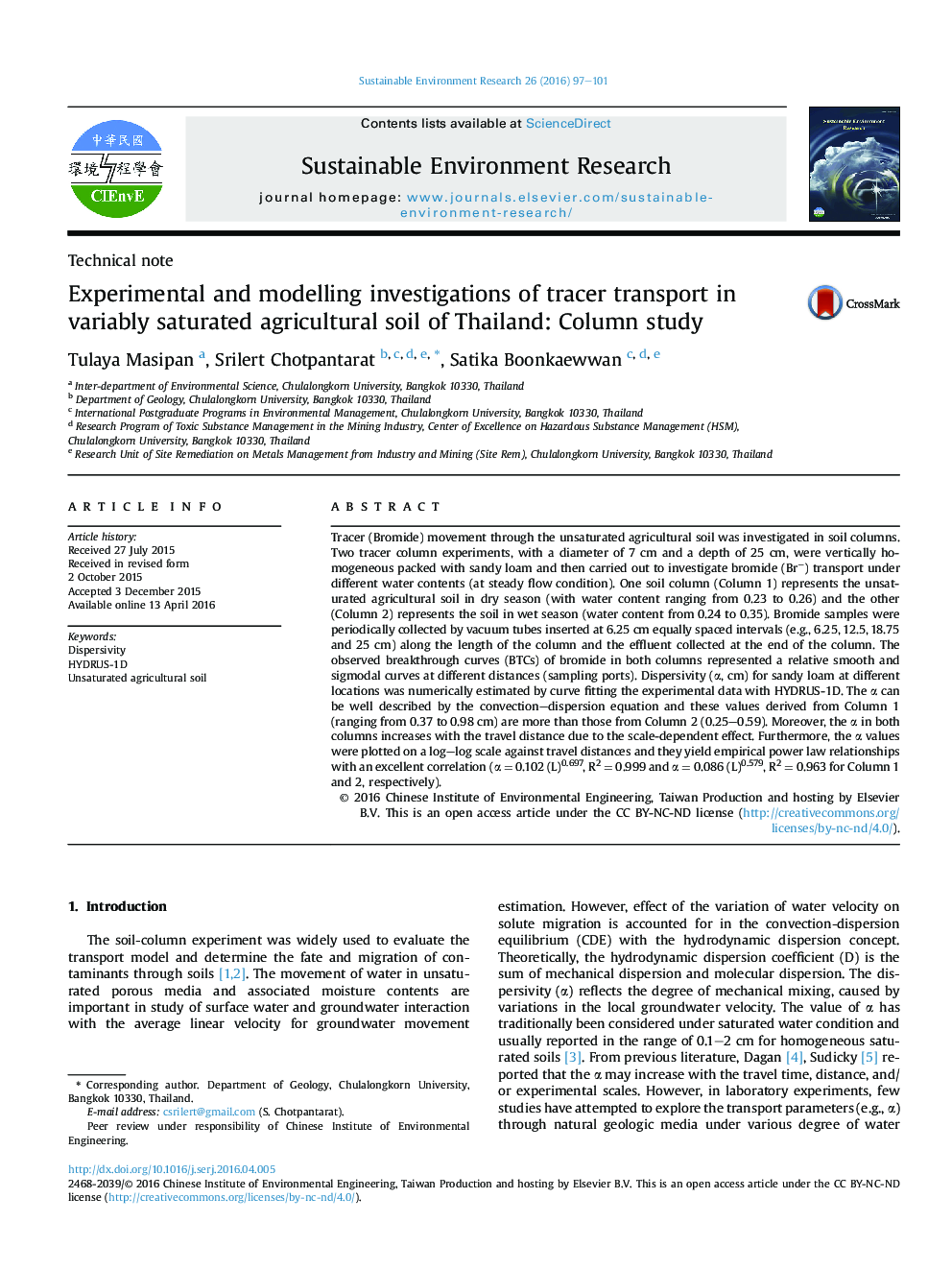| Article ID | Journal | Published Year | Pages | File Type |
|---|---|---|---|---|
| 4435396 | Sustainable Environment Research | 2016 | 5 Pages |
Tracer (Bromide) movement through the unsaturated agricultural soil was investigated in soil columns. Two tracer column experiments, with a diameter of 7 cm and a depth of 25 cm, were vertically homogeneous packed with sandy loam and then carried out to investigate bromide (Br−) transport under different water contents (at steady flow condition). One soil column (Column 1) represents the unsaturated agricultural soil in dry season (with water content ranging from 0.23 to 0.26) and the other (Column 2) represents the soil in wet season (water content from 0.24 to 0.35). Bromide samples were periodically collected by vacuum tubes inserted at 6.25 cm equally spaced intervals (e.g., 6.25, 12.5, 18.75 and 25 cm) along the length of the column and the effluent collected at the end of the column. The observed breakthrough curves (BTCs) of bromide in both columns represented a relative smooth and sigmodal curves at different distances (sampling ports). Dispersivity (α, cm) for sandy loam at different locations was numerically estimated by curve fitting the experimental data with HYDRUS-1D. The α can be well described by the convection–dispersion equation and these values derived from Column 1 (ranging from 0.37 to 0.98 cm) are more than those from Column 2 (0.25–0.59). Moreover, the α in both columns increases with the travel distance due to the scale-dependent effect. Furthermore, the α values were plotted on a log–log scale against travel distances and they yield empirical power law relationships with an excellent correlation (α = 0.102 (L)0.697, R2 = 0.999 and α = 0.086 (L)0.579, R2 = 0.963 for Column 1 and 2, respectively).
